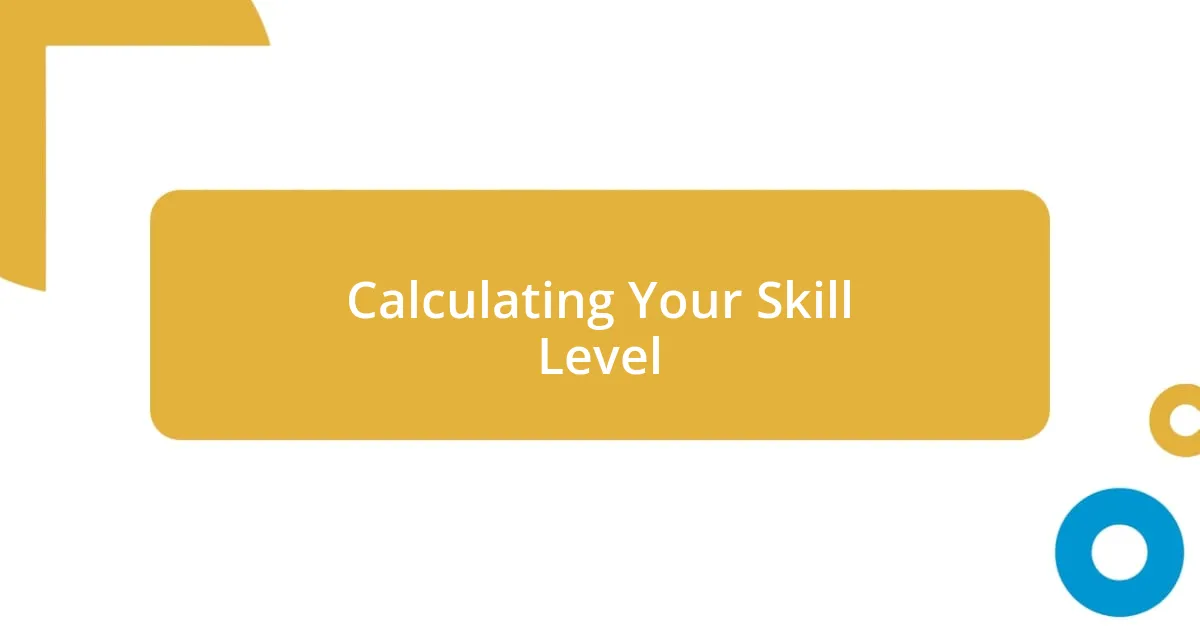Key takeaways:
- Understanding your writing rates is influenced by experience, market demand, and personal skill assessment.
- Researching industry standards helps in setting competitive and justified rates.
- Evaluating project complexity is crucial for determining appropriate pricing based on the required research and effort.
- Communicating rates effectively requires clarity, confidence, and open dialogue with clients to build trust and mutual understanding.

Understanding Writing Rate Basics
Understanding the foundations of writing rates is crucial for anyone venturing into the freelance writing world. I remember when I first started, I felt lost, grappling with whether to charge by the hour or per word. It seemed so overwhelming! But, as I grew more confident, I realized that knowing the basics helps in setting a rate that reflects both my skills and the market.
One thing I’ve learned is that your experience and expertise significantly influence your rates. When I first began, I charged significantly less because I had fewer clips to showcase. It wasn’t until I began to refine my craft and build a solid portfolio that I felt justified in increasing my rates. Have you ever felt underpriced for your work? That feeling can be disheartening, but it’s essential to recognize your value as you gain experience.
Another important factor involves understanding the market demand for different types of writing. I often find myself checking job boards and forums to see what others are charging. This habit not only helps me stay competitive, but it also provides insight into what clients are willing to pay. Have you taken the time to research before quoting a rate? This step can make a world of difference in how you valued your work in the eyes of potential clients.

Researching Industry Standards
When I first dove into the freelance writing scene, the sheer variety of rates threw me off. I realized that to set my own rates effectively, I needed to delve into industry standards. I began by browsing platforms like Upwork and Fiverr. Seeing a wide range from $0.05 to $1 per word gave me a clearer picture of where I might fit within that spectrum. It was both eye-opening and a source of comfort; knowing there was a benchmark helped me feel less isolated in my pricing decisions.
Another pivotal moment was attending a local writers’ meetup. Many seasoned writers shared their experiences regarding how they established their rates based on industry standards. Hearing their insight about the importance of aligning rates with quality and expertise resonated with me. I realized that while rates might fluctuate by niche—technical writing typically commands higher fees than general blog posts—understanding the standards in my specific area could significantly impact my success.
To put some of this information into context, I compiled what I’ve learned about writing rates:
| Type of Writing | Average Rate per Word |
|---|---|
| Blog Posts | $0.10 – $0.50 |
| Copywriting | $0.20 – $1.00 |
| Technical Writing | $0.25 – $2.00 |
| Ghostwriting | $0.15 – $3.00 |

Calculating Your Skill Level
Determining your skill level is one of the most critical steps in setting your writing rates. I recall the early days when I had a hard time assessing where I truly stood on the writing spectrum. It’s not just about the years spent writing; it’s about the quality of those years. As you reflect on your journey, consider the feedback you’ve received from clients, the complexity of projects you can handle, and your evolving expertise in various subjects.
Here are some factors to evaluate your skill level:
- Years of Experience: How long have you been writing professionally?
- Portfolio Quality: Do you have a collection of diverse, high-quality samples?
- Client Feedback: What kind of reviews or ratings have you received from past clients?
- Niche Expertise: Are you knowledgeable in a specific area that adds value to your writing?
- Continuous Learning: Have you taken courses or attended workshops to improve your skills?
Assessing these aspects helped me gain clarity in my abilities and confidence in my rates. I remember a client once told me that my ability to distill complex ideas into easy-to-understand language set me apart. That moment was a revelation for me, underscoring the significance of understanding my value and how my expertise directly correlates with my pricing strategy.

Evaluating Project Complexity
Evaluating project complexity is crucial for establishing fair and justifiable rates. When I assess a project, I often reflect on several elements: the subject matter, the required research depth, and the intended audience. For instance, if I receive a request for a technical white paper, I immediately think about the level of detail and accuracy needed. Projects like this often require extensive research and a deep understanding of the topic, which naturally influences my pricing.
I’ve had experiences where the complexity of a project took me by surprise. One time, a client approached me for a blog post that turned into a multi-part series on an intricate subject. While I initially quoted a rate based on a single piece, the layers of research and the challenge of breaking down complex ideas turned it into something much more significant. That experience taught me to be flexible with my rates when faced with more complicated requests, ensuring that I’m compensated fairly for my time and efforts.
Furthermore, I’ve realized that different project complexities not only affect my rates but also my creativity and energy. When I work on something straightforward, the words flow easily, and I enjoy the process. However, a complex project might require not just more time but also a different kind of mental energy — one that is often more draining and requires more focus. How do I quantify that energy? I’ve found that adjusting my rates to reflect the mental work involved helps me maintain motivation and passion for every project I take on.

Setting Your Minimum Rate
Setting my minimum rate comes down to a careful balance of personal conviction and market research. I remember the first time I attempted to set a baseline for my charges; I was overwhelmed by self-doubt. It was all too easy to undersell myself, but I soon realized that my minimum rate needed to reflect not just my skills, but also my sustainable income goals. Have you ever found yourself underpricing your services because you’re unsure about your worth? I have, and it taught me that confidence in my abilities directly influences how others perceive my value.
In practical terms, I determine my minimum rate by analyzing my living expenses and the time I realistically spend on writing. Take a moment to jot down your monthly bills and how many projects you can realistically take on. I did this exercise early on, and it was eye-opening. It turns out that I needed to charge more to maintain my lifestyle while continuing to invest in my professional growth. Establishing that financial baseline gave me the clarity and assertiveness I needed while negotiating with clients. The question that springs to mind is, how do you illustrate your worth without feeling like you’re overstepping?
I think it’s crucial to consider not only your financial needs but also the emotional energy that goes into each project. I once took on a client who had a great pitch but turned out to be a constant source of revisions and tight deadlines. I realized that while the project paid my minimum rate, the stress and emotional rollercoaster it created made it feel far less rewarding. This experience pushed me to set my minimum rate with not just my financial goals in mind, but also a sustainability factor rooted in my emotional well-being. Balancing personal fulfillment with fiscal responsibility became my new mantra.

Adjusting Rates for Clients
When working with clients, I often find that flexibility is key. I’ve had situations where a client’s budget didn’t align with the complexity of the project, but instead of turning them away, I proposed a tailored approach. For instance, if a client wanted a comprehensive guide but could only afford a simpler version, I would offer to create a more condensed piece that still delivered value. This way, both my needs and theirs are met without compromising quality. Have you ever negotiated a middle ground that satisfied everyone involved?
In another instance, I remember a repeat client who suddenly faced budget constraints due to unforeseen circumstances. Rather than losing the partnership, I adjusted my rate temporarily while discussing the possibility of future work at a higher rate once their situation improved. This flexibility not only helped maintain our relationship but also showcased my understanding and willingness to collaborate. The emotional satisfaction of knowing I made a positive impact on their business was rewarding beyond the financial aspect.
Adjusting rates for clients doesn’t just hinge on numbers; it’s about building trust and communication. I often find that discussing my rationale with clients creates a deeper understanding of the value I bring. For example, explaining why certain projects might require extra resources or time allows clients to appreciate the intricacies involved. This dialogue helps me elevate the conversation from mere pricing to a mutual partnership, where valuing each other’s input becomes rewarding for both sides. Have you had conversations like this with your clients? You might be surprised at how much more they appreciate your work when you share your thought process.

Communicating Your Rates Effectively
Communicating your rates effectively requires a blend of clarity and confidence. I remember a time when I sent a client my rate card but then filled the email with justifications, like my life story wrapped in my qualifications. It dawned on me that over-explaining can undermine your authority. Instead, I’ve learned to present my rates straightforwardly, reinforcing value through my portfolio while trusting clients to recognize my expertise.
It’s also essential to initiate a dialogue about rates without making it feel awkward. During initial discussions, I pose open-ended questions about their project expectations and budget. This not only opens a channel for transparency but also positions me as a partner interested in meeting their needs. Have you found that asking the right questions leads to better understanding on both sides? I certainly have, and it’s a game changer when both parties are on the same page.
Another key aspect I’ve discovered is the power of confidence in delivering my rates verbally. Early on, I hesitated, mumbling numbers or providing discounts out of fear of rejection. Now, I say my rates clearly and with conviction. I watch for the client’s reaction, and often, I’ve been pleasantly surprised by their willingness to accept what I deemed fair. It’s a reminder that your mindset can set the tone for the entire conversation. How do you approach discussing your rates? I truly believe that if I can stand firm in my value, clients will feel the weight of it too, leading to more fruitful collaborations.














